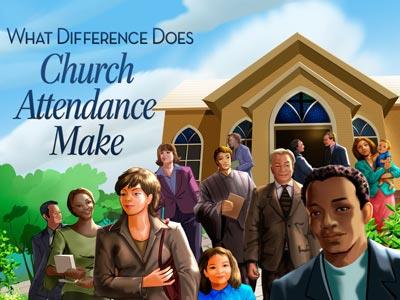-
Missing The Forest For The Trees Series
Contributed by Chuck Sligh on Nov 28, 2017 (message contributor)
Summary: Too often we miss the forest for the trees in Ephesians because we fail to take into account the corporate groups Paul talks about. Understanding this is the only way to understand Paul's ecclesiology, and it has ramifications for us personally as well.
Missing the Forest for the Trees
Ephesians - Live Like You Really Are
Chuck Sligh
January 15, 2012
POWERPOINT: There is a PowerPoint presentation for this sermon available by requesting it from me at chucksligh@hotmail.com.
TEXT: Please turn in your Bibles to Ephesians 1:22
INTRODUCTION
Illus. – One night a wife found her husband standing over their infant’s crib. As she watched him looking down at their very first baby, she saw on his face a mixture of emotions: disbelief, doubt, delight, amazement, enchantment, skepticism. Touched by this unusual display and deep emotions, with eyes glistening she slipped her arm around her husband.
“A penny for your thoughts,” she said.
“It’s amazing” he replied. “I just can’t see how anybody can make a crib like that for only $46.50.”
When I read that story, I thought how some people can’t see the forest for the trees. Often, when you concentrate on the details of something, you lose sight of the big picture, I believe that is the problem with understanding Ephesians.
I’ve read in many of my commentaries that the main theme of Ephesians is the church. I could never see this, especially in chapters 1-3 because my judgment was clouded by the focus on individualistic salvation that both Calvinism and Arminianism share, as well as the unhealthy focus of individualism of modern Western Christianity. So when I read about our chosenness in Christ in chapter 1, verse 4; predestination in verses 5 and 11; adoption in verse 5; acceptance in Christ the beloved in verse 6; and many other salvation truths, I naturally interpreted them through the theological lenses I had studied and the individualism bred by my Western culture. In other words, I couldn’t see the forest of Paul’s main emphasis for the trees of theology and culture that had clouded my view.
In chapter 1, one of the things I’ve tried to help you see is that Paul’s frame of reference is not the salvation of INDIVIDUALS per se, but rather on corporate groups of people. So we saw that when Paul speaks of chosenness, predestination, adoption, acceptance, etc., he’s not really talking so much about our INDIVIDUAL chosenness, predestination, adoption, acceptance, etc., but about the church as a whole, or the entire body of Christ, that individuals partake of inasmuch as they are connected to Christ and His body by faith. This is no more true than in chapter 2 which is often applied to individuals exclusively, reinforcing people’s theological and cultural predispositions, but in reality is talking about four broad corporate entities: Mankind as a whole, Israel, God’s Old Testament corporate chosen people, the Gentiles, and the Church, God’s New Testament chosen people.
To see this clearly, we’re going to take a bird’s eye view of Paul’s doctrine of the church, and in the process, we’re going to pass over a lot of detail without a lot of commentary.
Then we’ll wrap it up at the end and draw some conclusions and make some applications.
So let’s dive in so we’re not here till the cows come home.
I. FIRST, WE SEE CHRIST, THE EXALTED HEAD OF THE CHURCH –Ephesians 1:22 – “And hath put all things under his feet, and gave him to be the head over all things to the church, 23 Which is his body, the fulness of him that filleth all in all.”
You may find it odd that I begin at the end of chapter 1, but remember that the chapter and verse divisions were not part of the original writings and sometimes the divisions are somewhat arbitrary, breaking up thoughts. Actually, these two verses in chapter 1 form the introduction to one long thought, beginning here going all the way to chapter 3, verse 12, and in fact I would include the chapter 3 portion in this sermon, were it not for the fact that it would just make the sermon too long and laborious, so we’ll cover it the next time we’re in Ephesians.
In this little introduction, Paul clearly identifies His body as “the church.” The term church is used in two ways in the New Testament: Usually (about 90 percent of the time), it refers to INDIVIDUAL LOCAL BODIES OF BELIEVERS, like Grace Baptist Church that are evangelizing, administering the church ordinances, discipling believers, and ministering to one another. Less frequently, but no less importantly, it’s used as it is here in Ephesians 1:22-23 to mean the UNIVERSAL SINGLE BODY of believers of all persuasions and denominations from the beginning of the church at Pentecost until the present.
The key thing to see here is that God has given all authority in the church to CHRIST as the Head of the Body who is in an exalted position in heaven. There is so, so much more we could look at here, but since we’re just trying to get the bird’s eye view today, let’s move on.

 Sermon Central
Sermon Central



